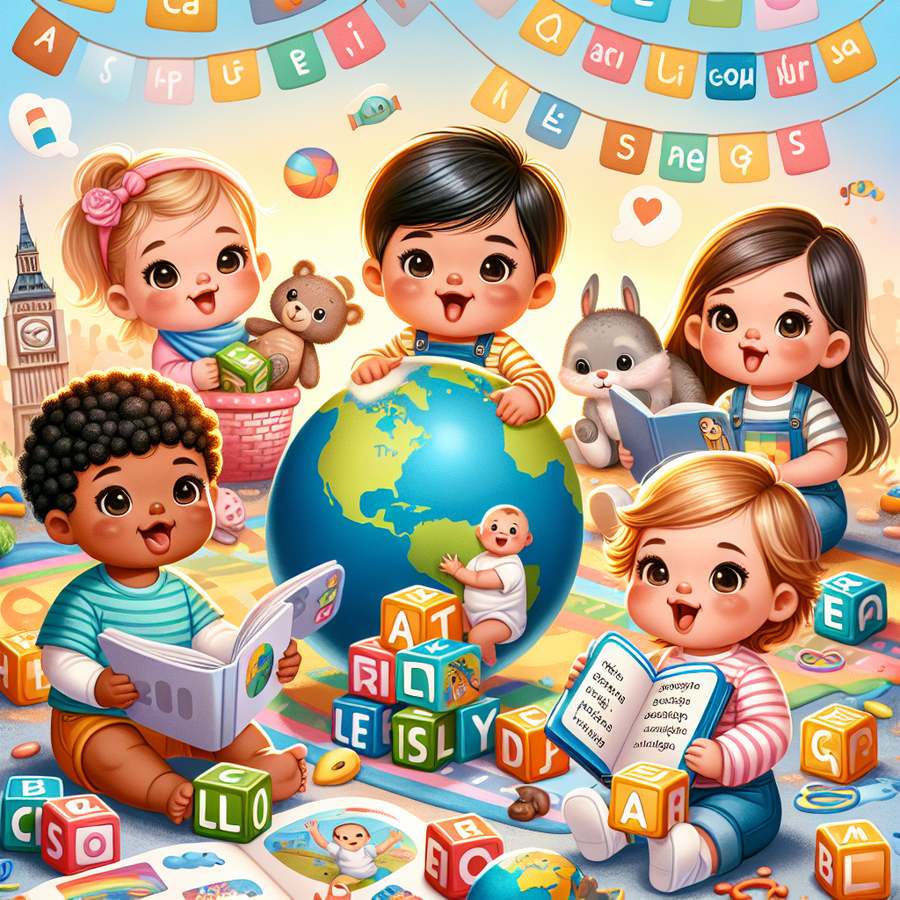Supporting bilingual language development in babies and toddlers is a journey that opens up a world of opportunities for your little one. Navigating this path requires an understanding of the benefits and strategies to foster a bilingual environment effectively. This article delves into the essentials of bilingual language development, offering insights and practical tips to parents and caregivers.
The Foundation of Bilingual Language Development
The journey of bilingual language development starts from infancy. Research shows that babies have the innate ability to differentiate between languages, making the early years an ideal time to introduce a second language (source). This period of rapid brain development lays the groundwork for linguistic skills that can benefit them throughout their lives.
Introducing your child to a second language early on can enhance cognitive abilities, including problem-solving skills and creativity. Additionally, it fosters cultural awareness and empathy, preparing your child for a globalized world. To support this development, it’s crucial to create a rich linguistic environment that encourages interaction in both languages.
Strategies for Supporting Bilingual Language Development in Babies and Toddlers
Supporting bilingual language development in babies and toddlers is a commitment to providing a nurturing environment that encourages language learning. One effective strategy is the ‘one parent-one language’ approach, where each parent consistently speaks a different language to the child. This method helps in clear differentiation between languages. Additionally, incorporating bilingual books, music, and toys can greatly enrich your child’s linguistic environment.
Engaging with your child through play is another powerful tool. Activities like singing songs, reading stories, and simple games in both languages can significantly enhance language acquisition. For more ideas, exploring resources like activities to boost fine motor skills in a 9-month-old or encouraging positive sibling interactions from an early age can offer additional ways to incorporate language learning into everyday play.
Common Challenges and How to Overcome Them
While the benefits of raising bilingual children are vast, it’s not without its challenges. One common concern is the fear of delayed language development. However, research indicates that bilingual children may start speaking slightly later but quickly catch up to their monolingual peers. It’s important to monitor your child’s language milestones and consult with a professional if you have concerns. For guidance, refer to milestone checklists for the first 24 months.
Another challenge is maintaining consistency and exposure to both languages. To overcome this, leverage your community resources such as bilingual playgroups, libraries, and cultural events. Online resources and educational apps can also supplement your child’s language exposure. Remember, consistency is key in supporting bilingual language development in babies and toddlers.
In conclusion, supporting bilingual language development in babies and toddlers offers a multitude of benefits that extend beyond just language proficiency. By understanding the foundational principles and implementing effective strategies, parents can play a pivotal role in their child’s bilingual journey. Embrace the challenges and celebrate the milestones as you open the doors to a world of linguistic and cultural richness for your child.
For more insights into nurturing your child’s language development, explore our articles on stimulating language development in infants under 6 months and how to identify and nurture your child’s strengths from an early age.













